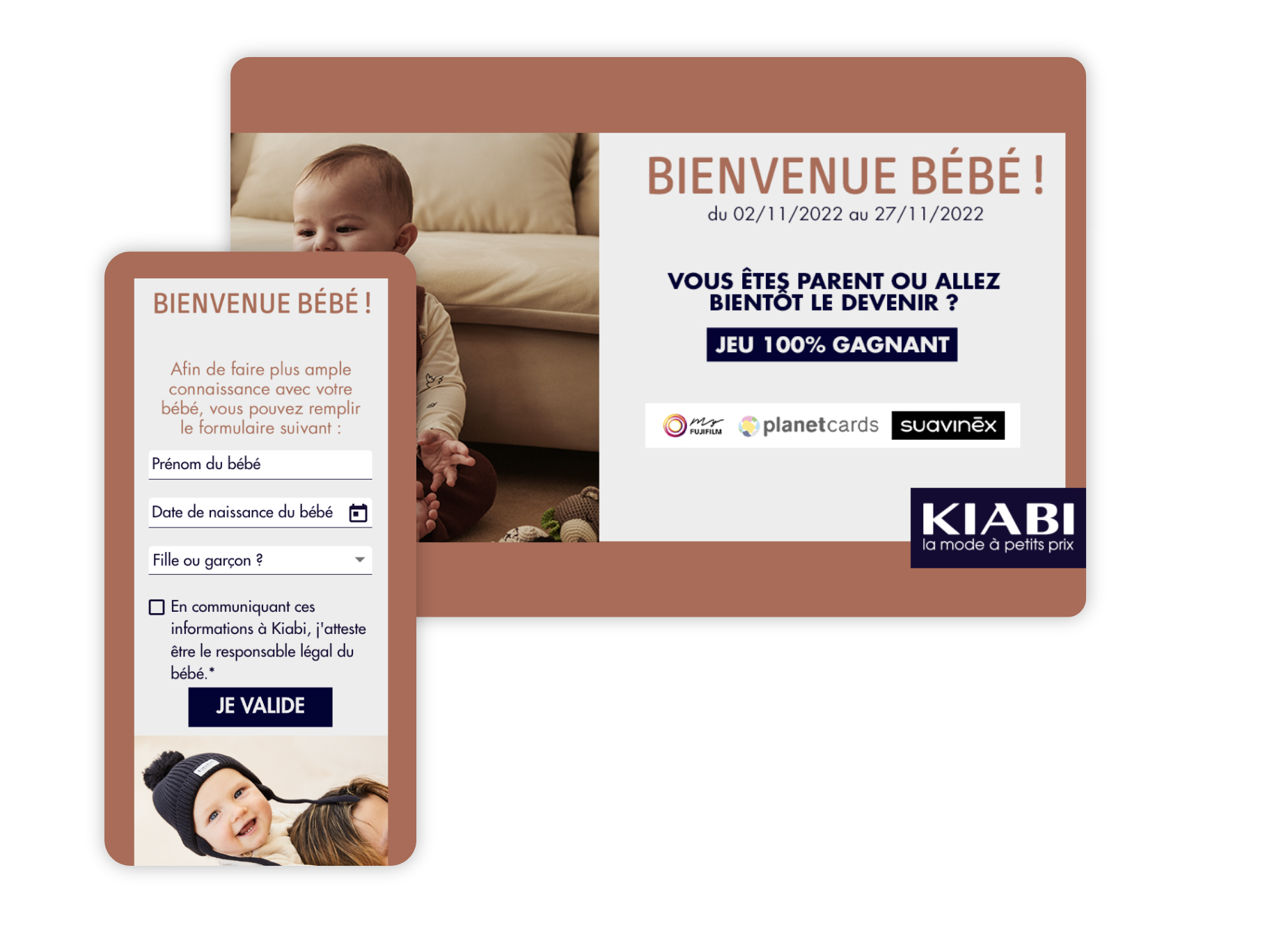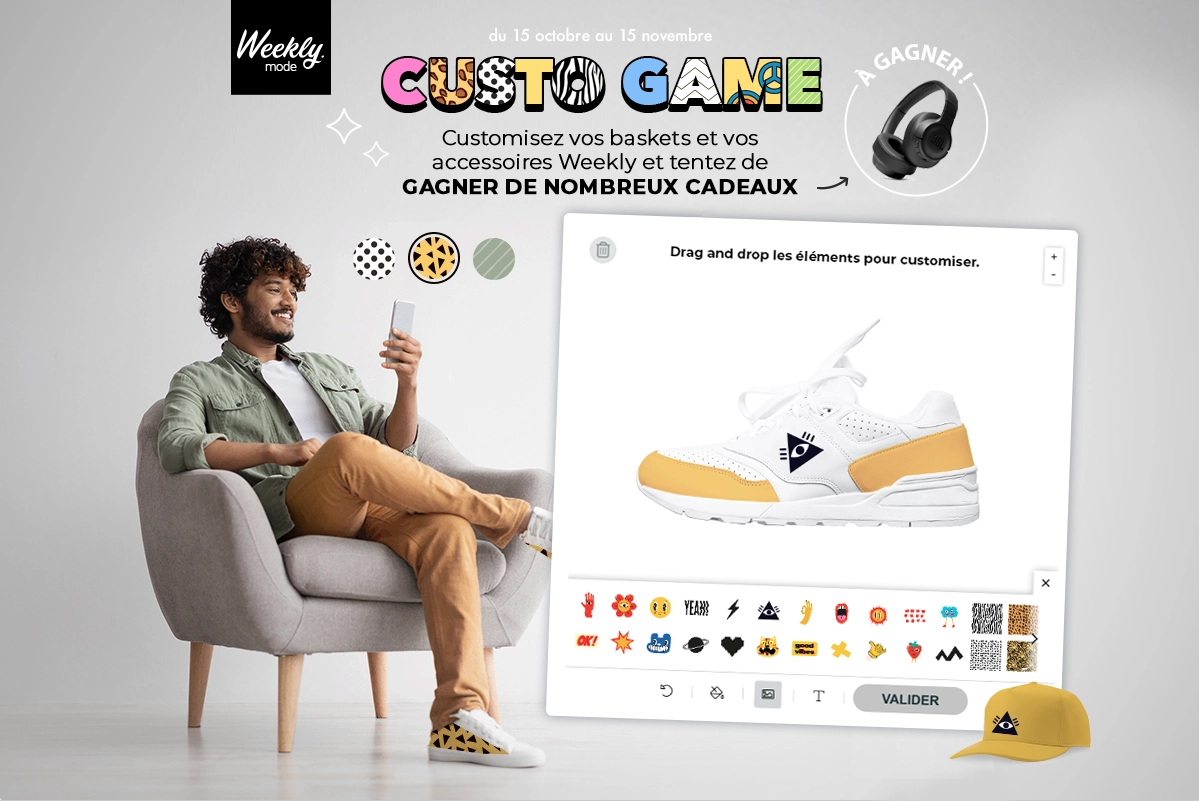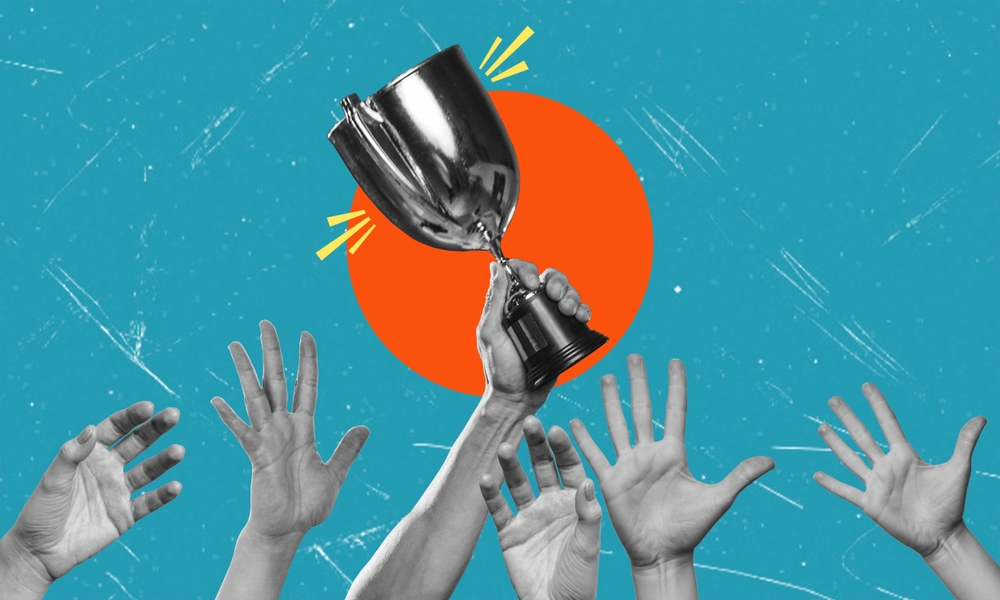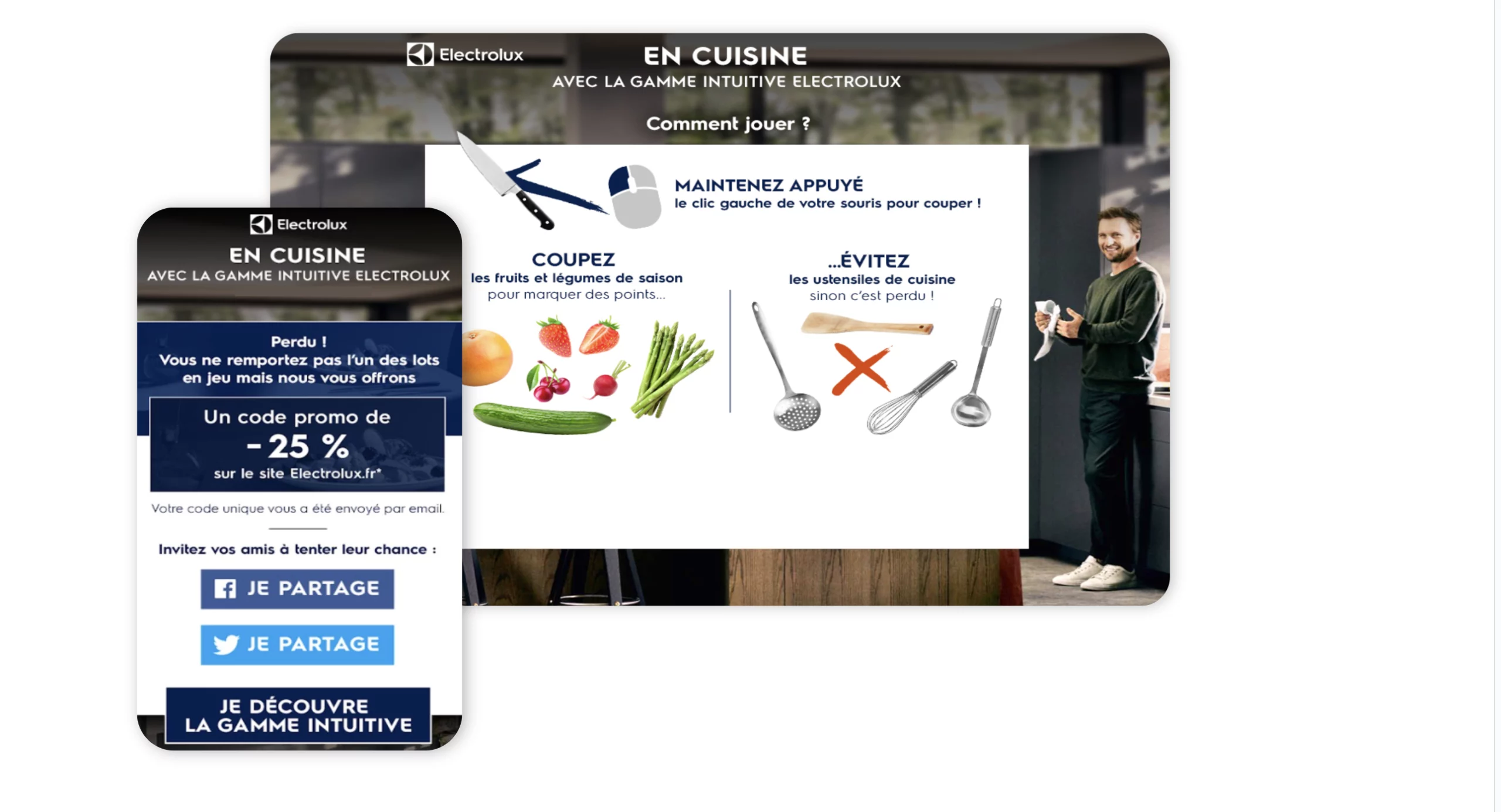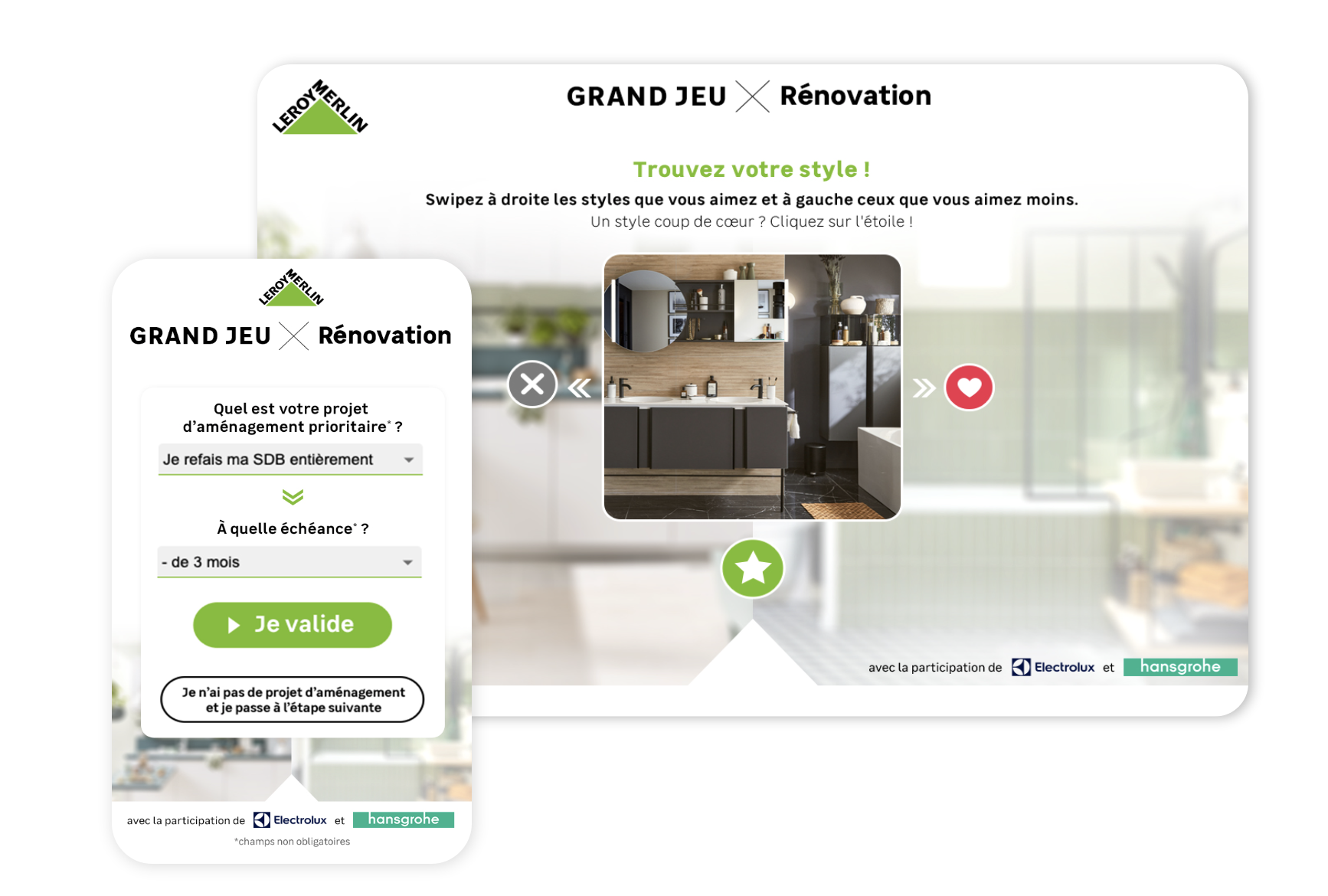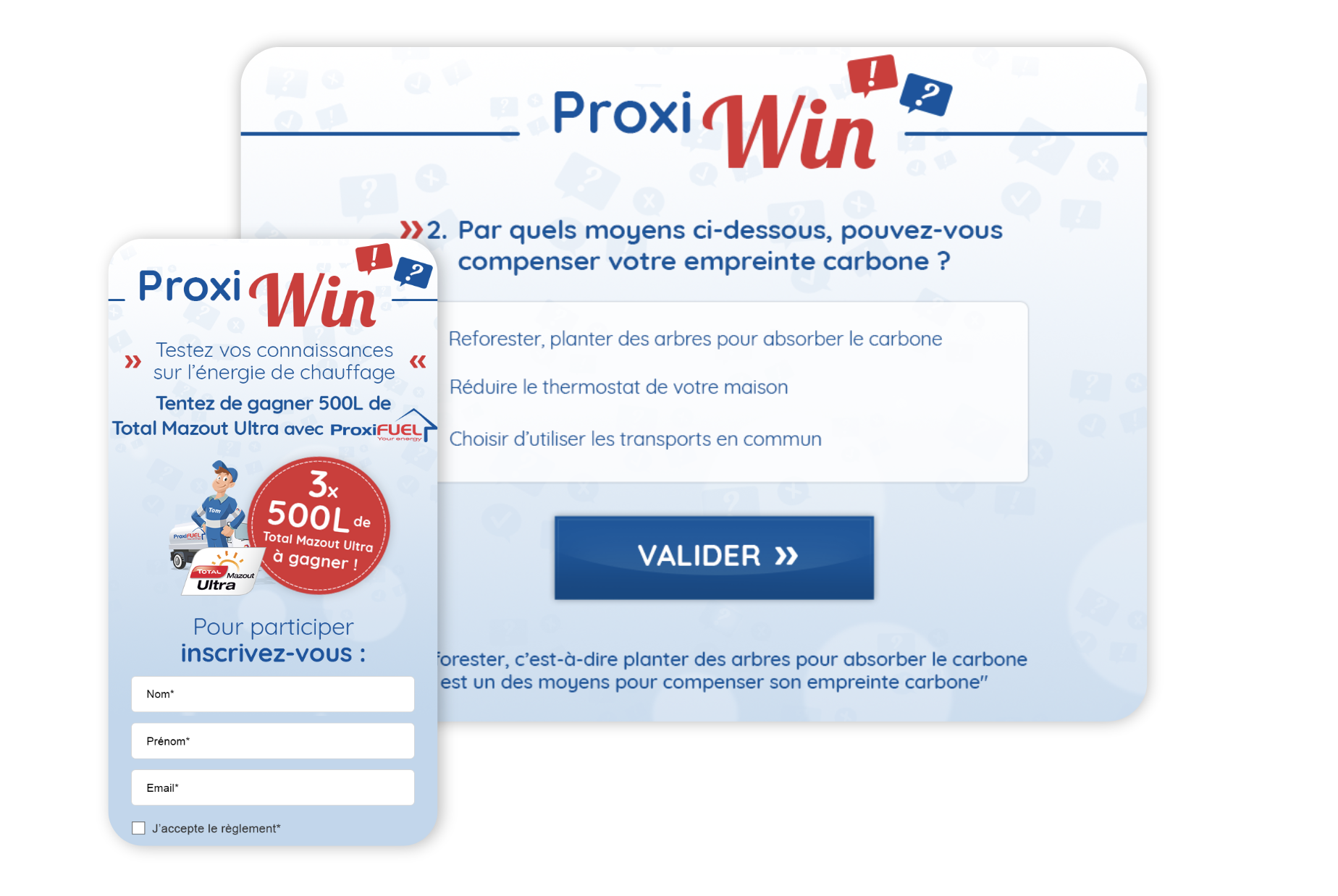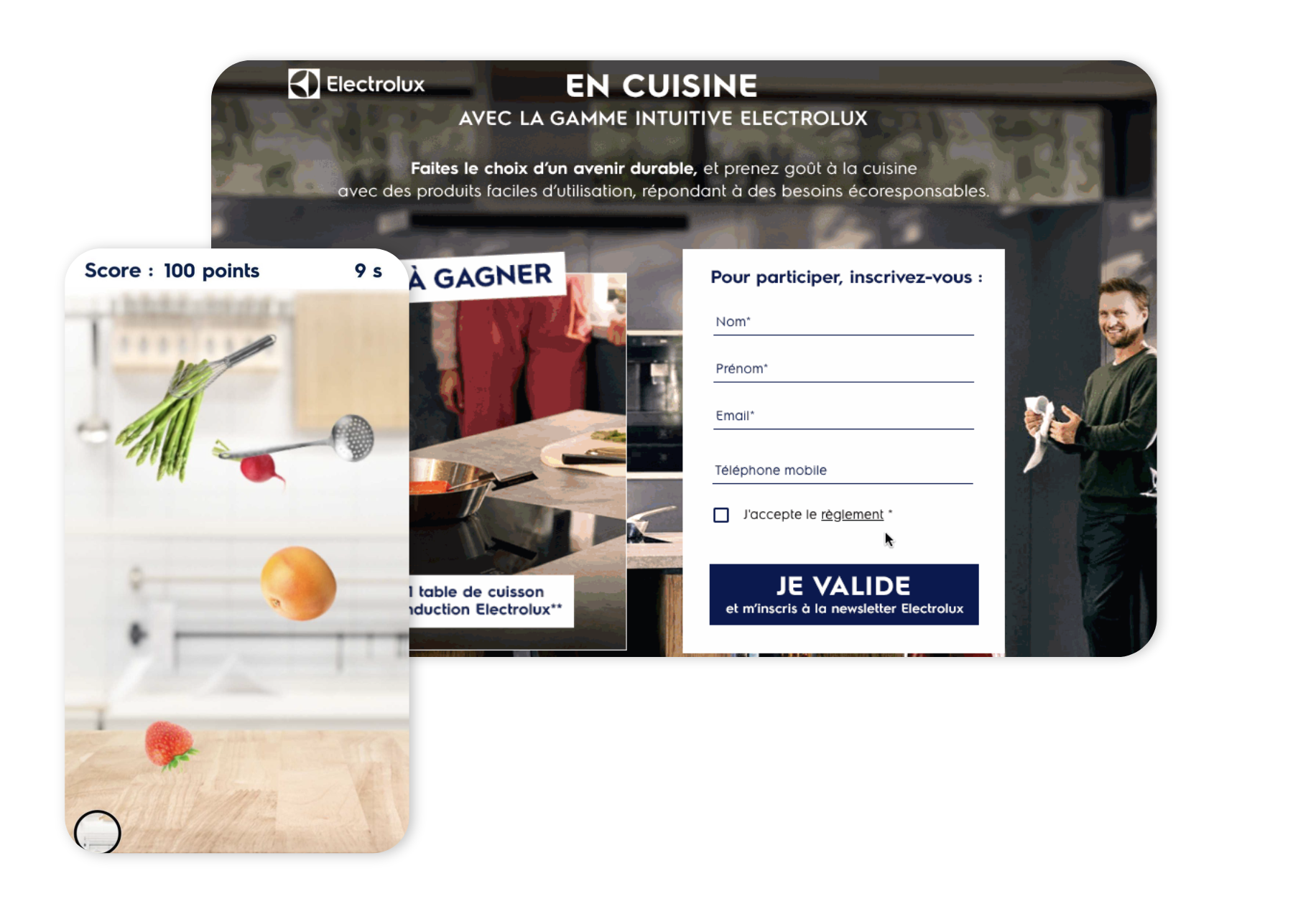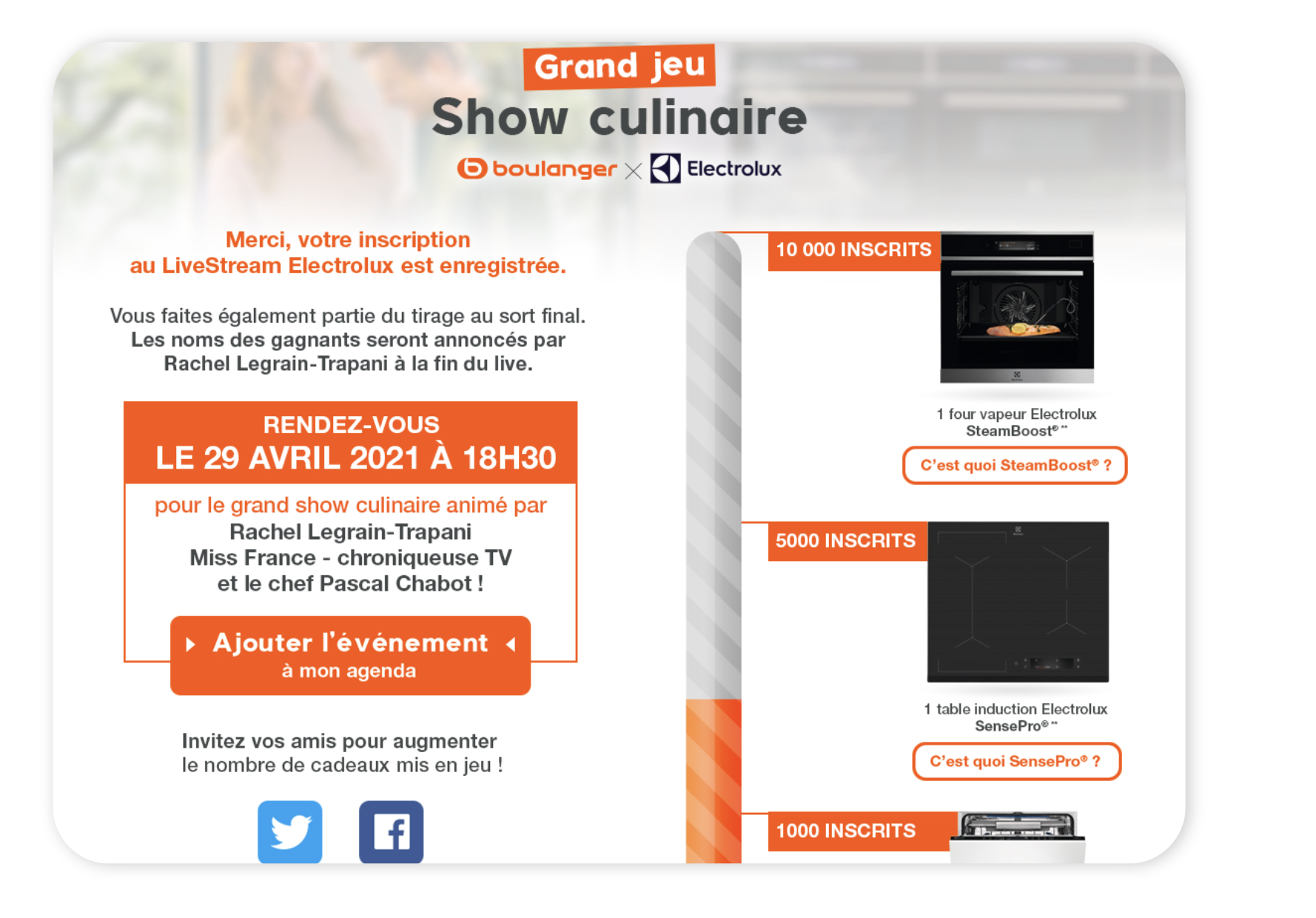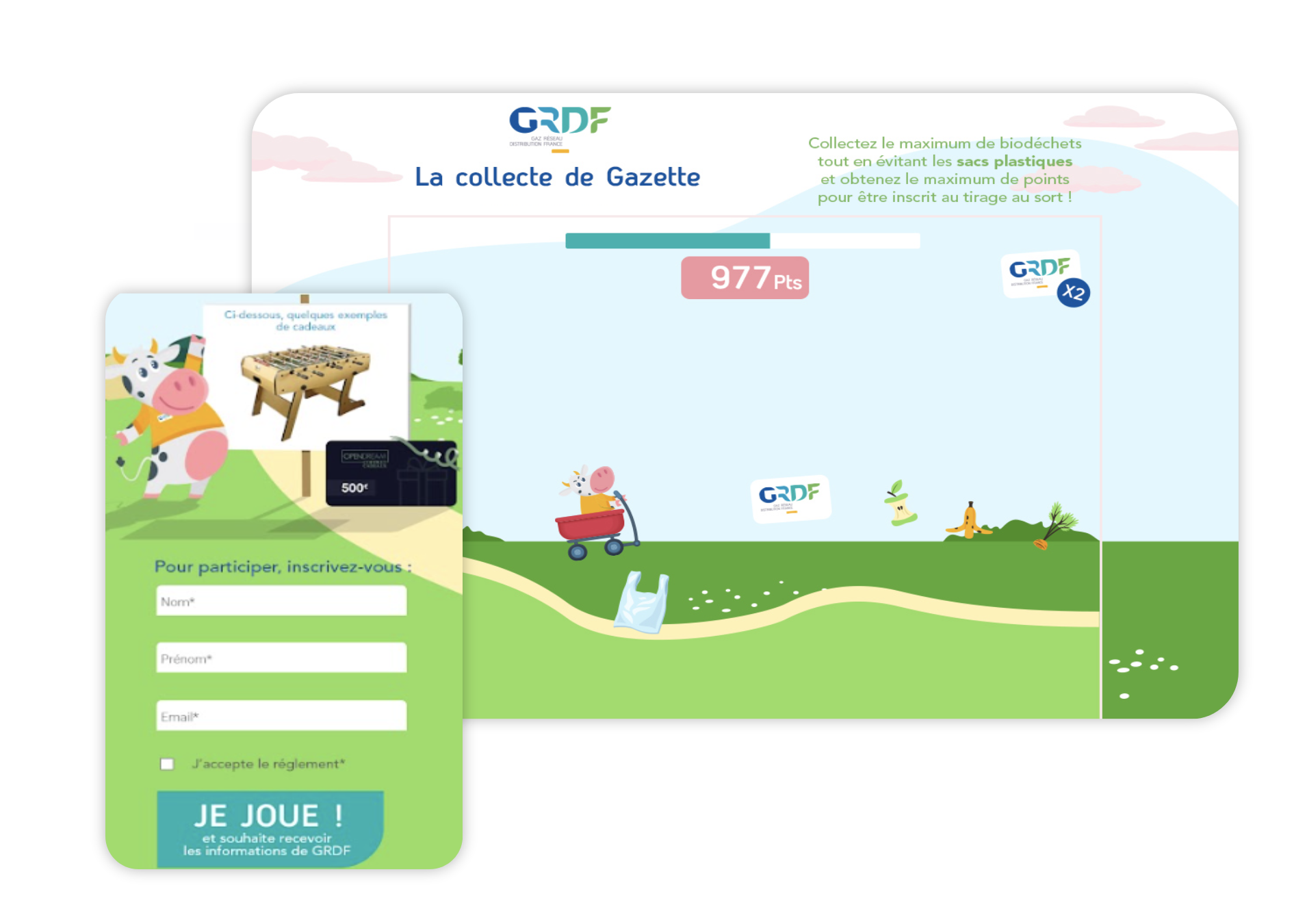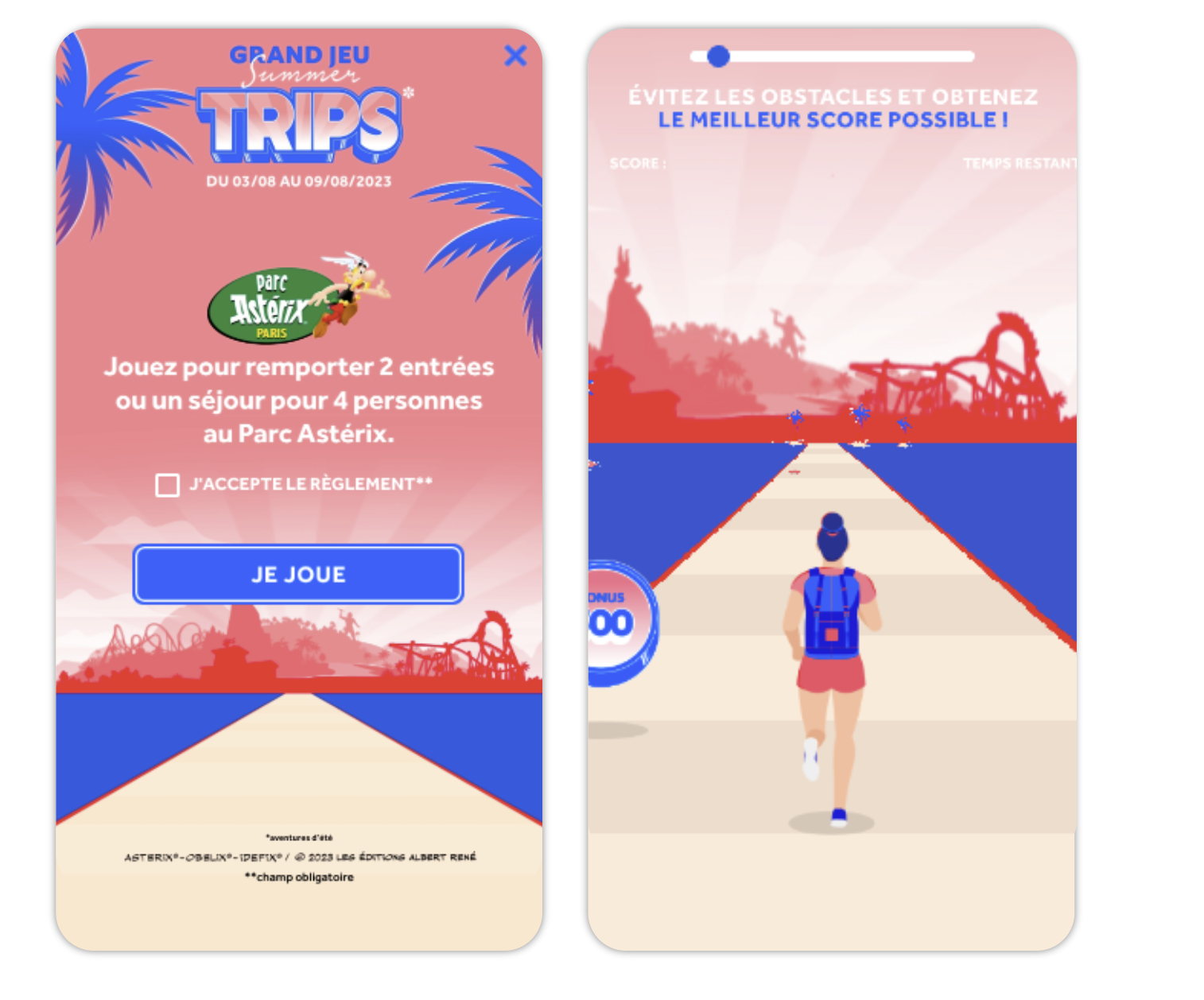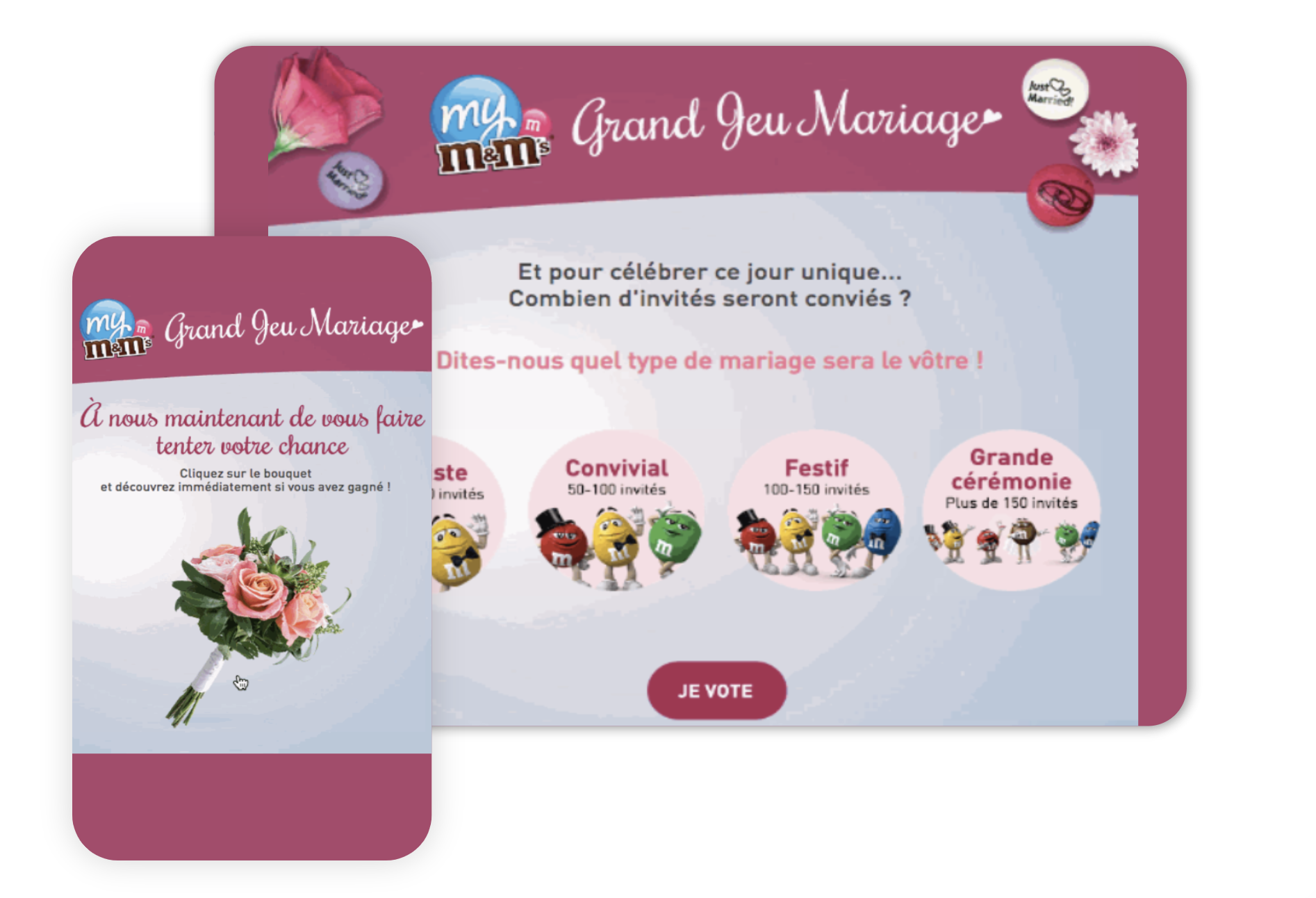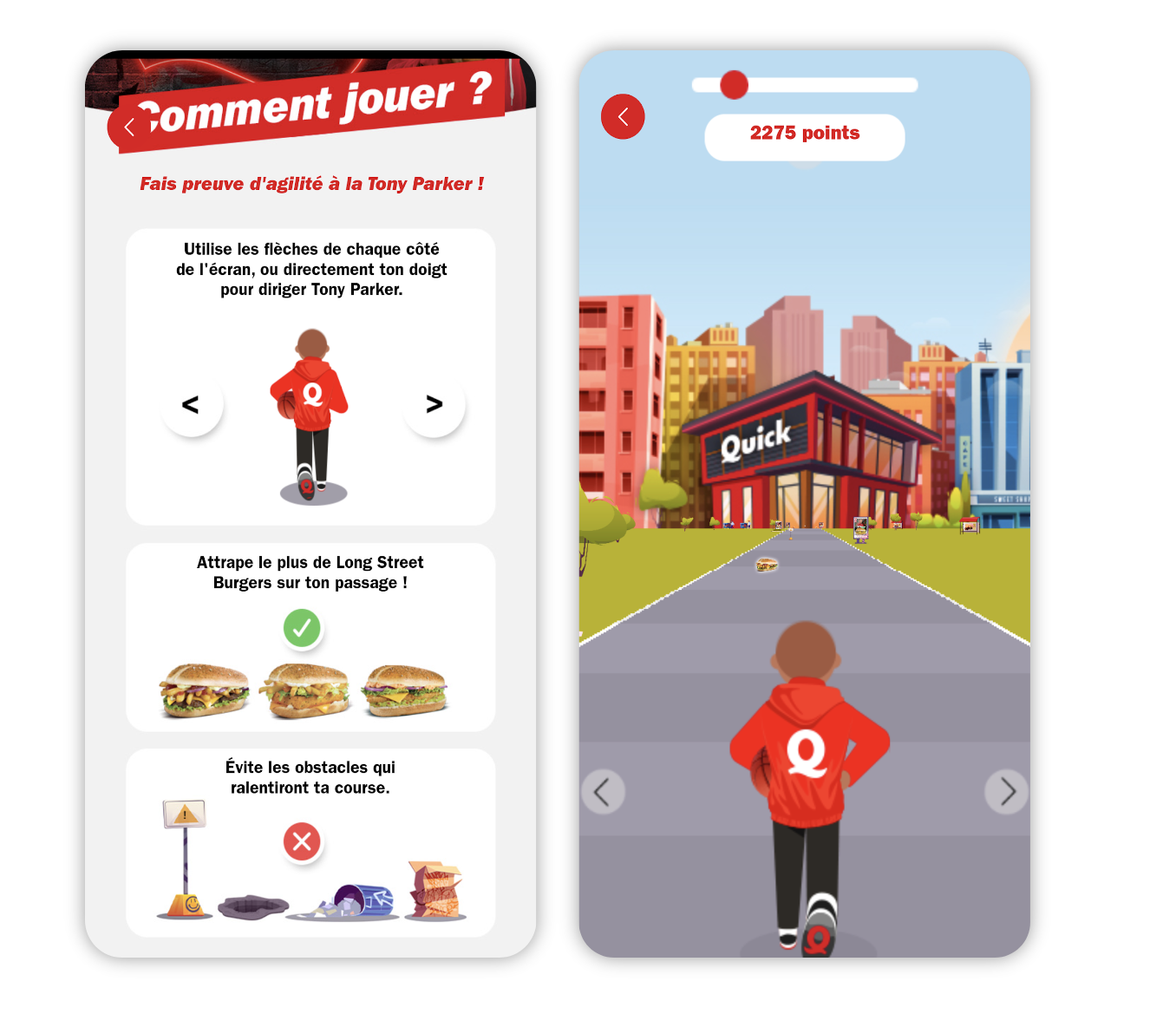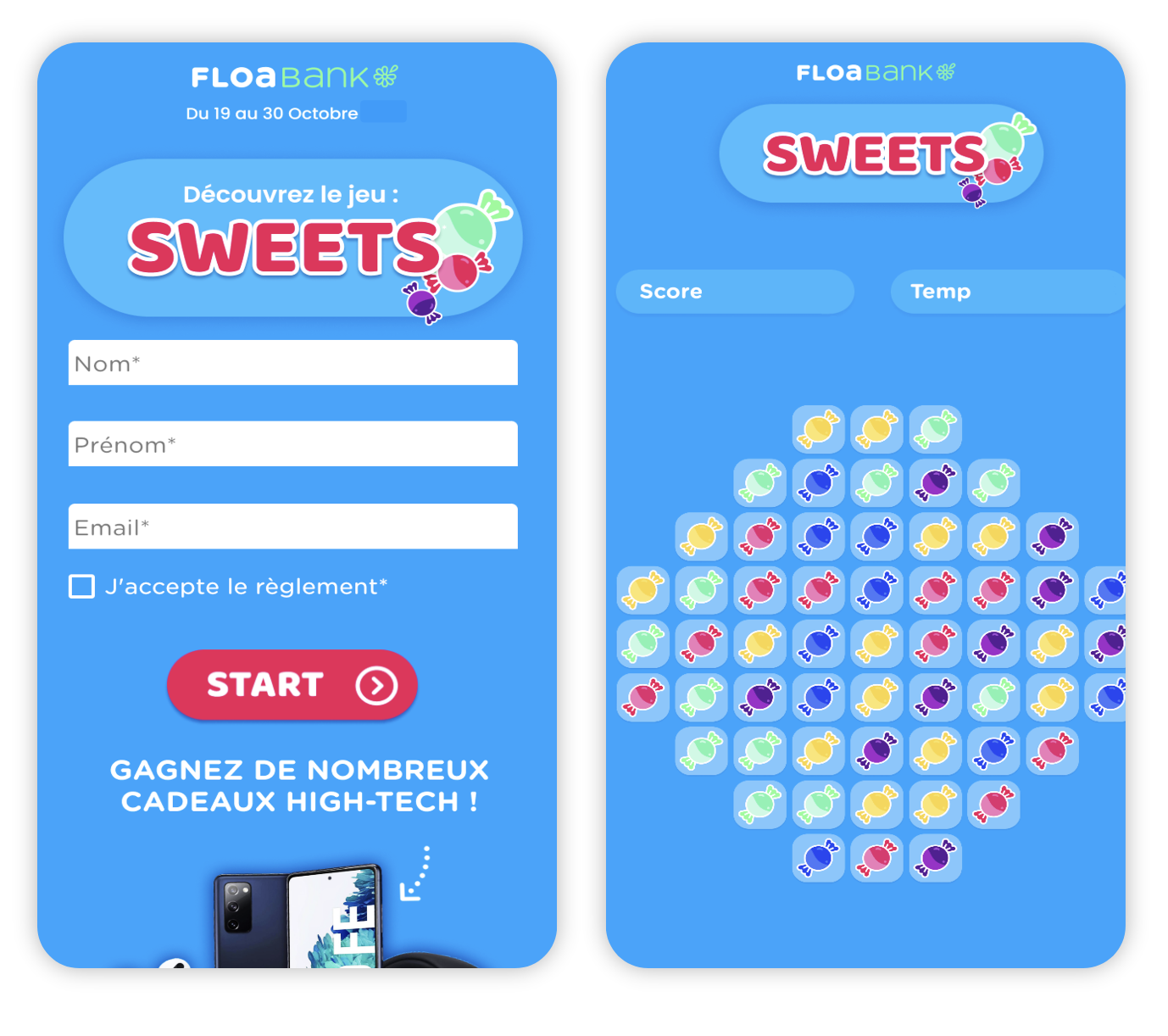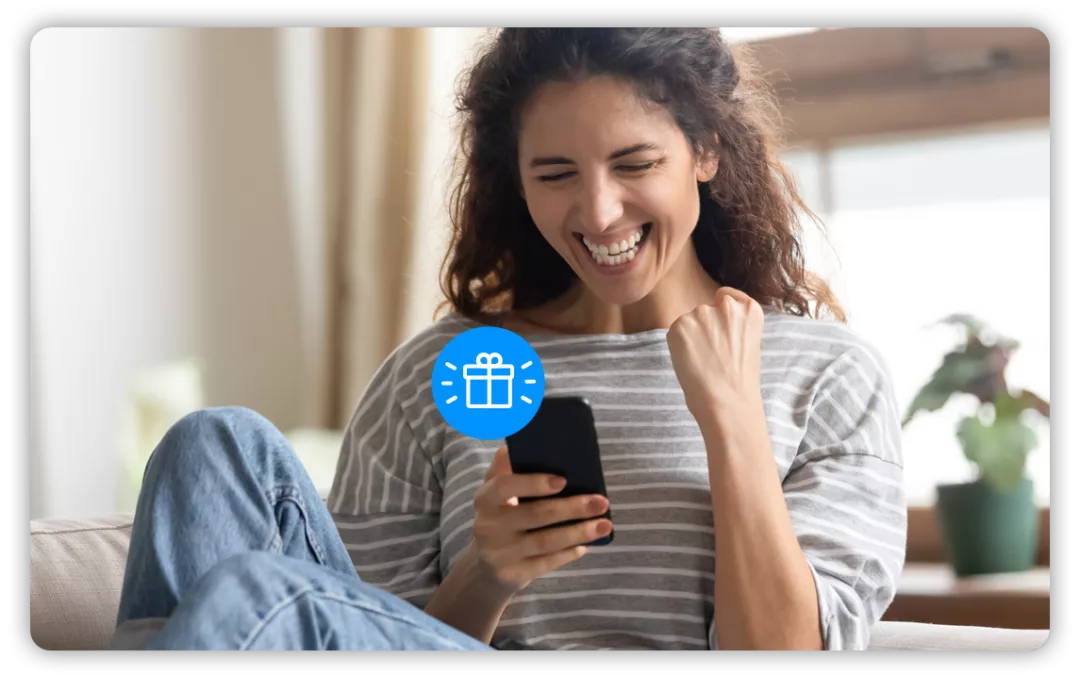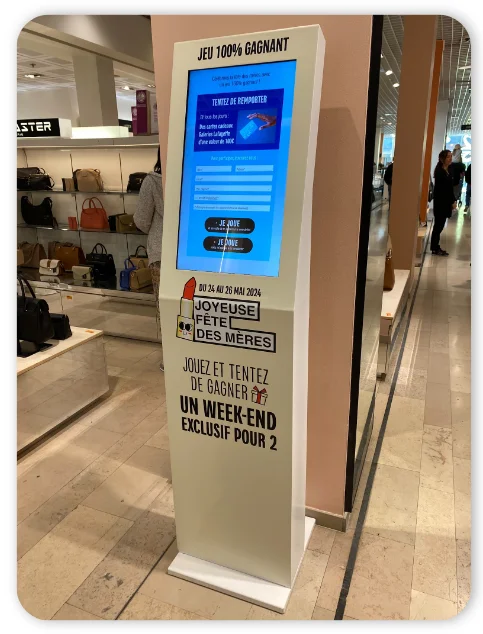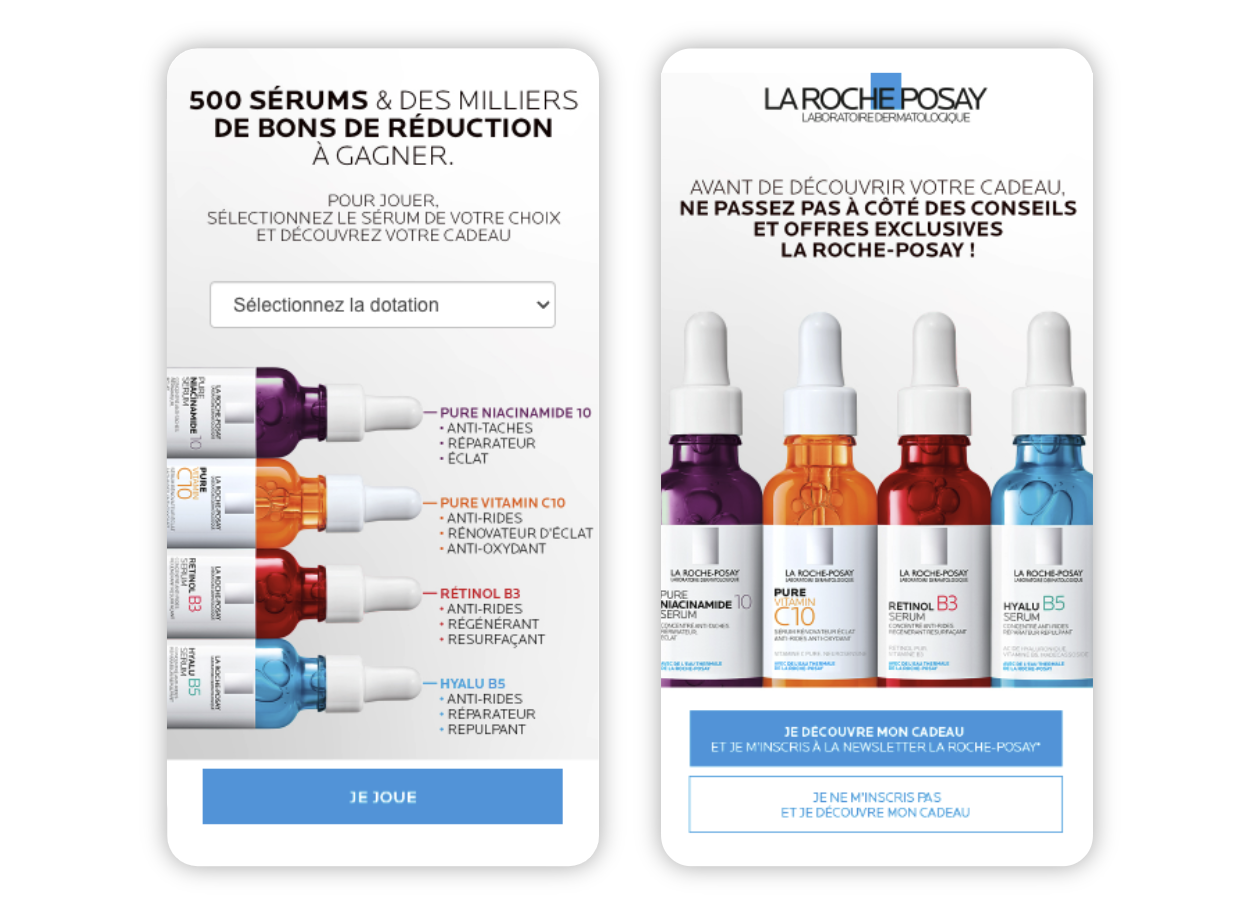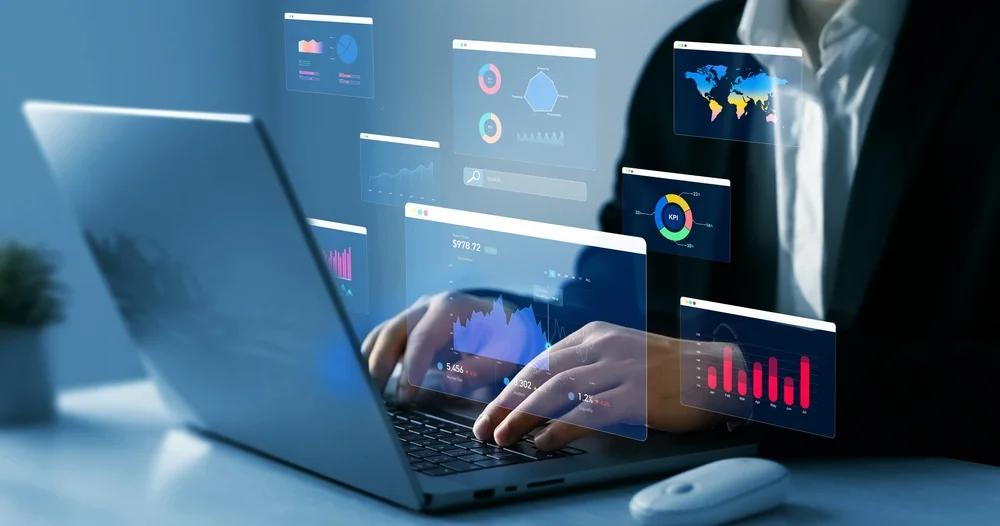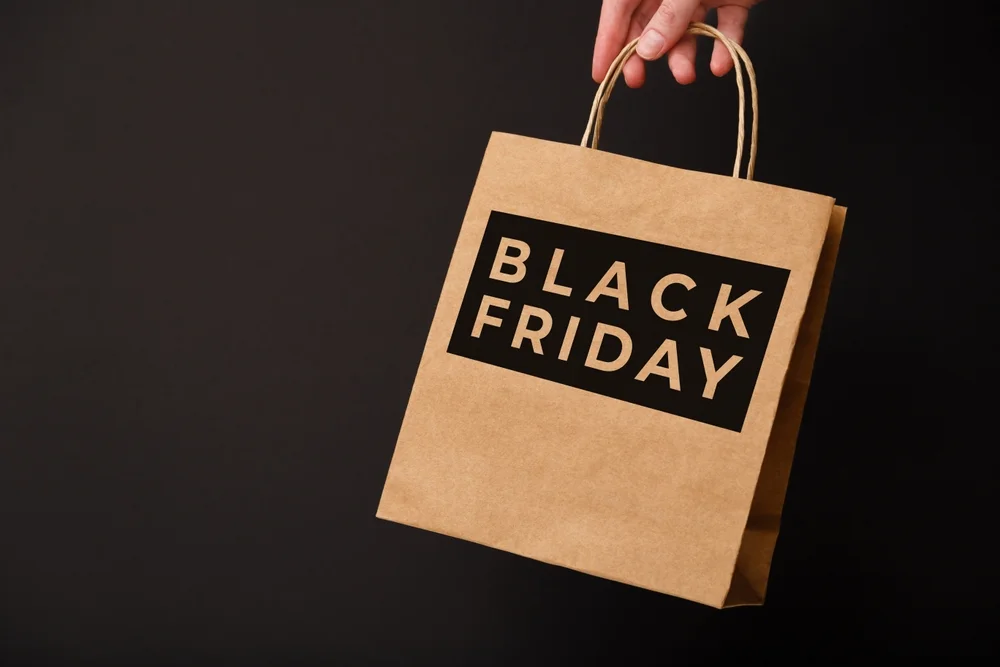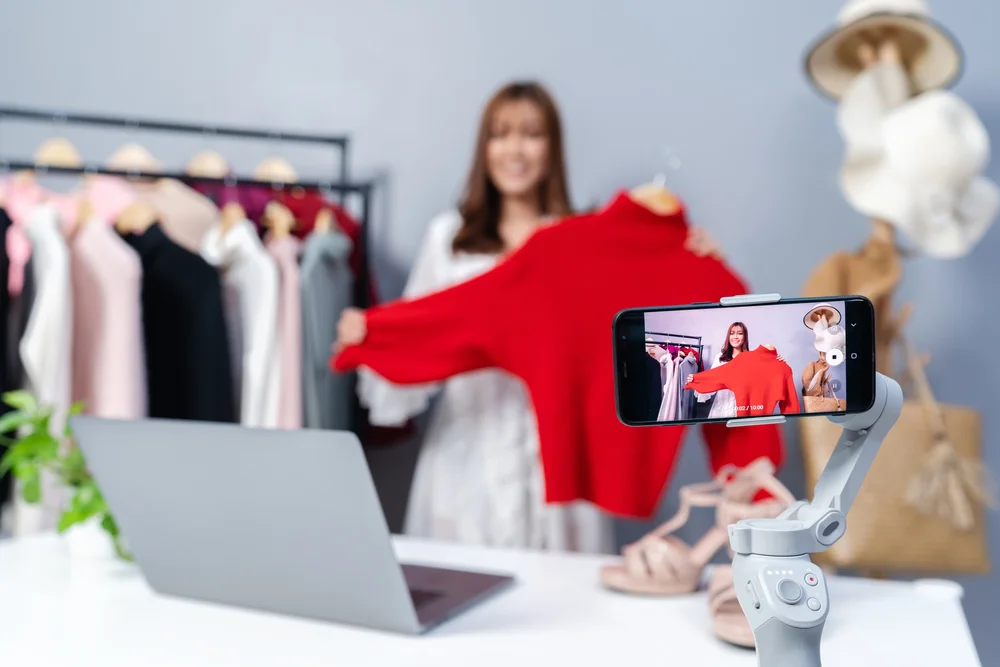
Gamification: definition, guide and marketing solutions
Quel est le but de la gamification en marketing ? La gamification est un moyen d’engager une audience. Le fait de proposer un contenu interactif booste les performances des campagnes marketing. De fait, 93 % des spécialistes du marketing déclarent utiliser et obtenir d’excellents résultats grâce à cette stratégie marketing.
Dans ce guide, nous allons vous présenter ce qu’est la gamification et comment cet outil peut vous aider à relever vos défis marketing.
What is marketing gamification?
La gamification est une technique qui emprunte des éléments de conception aux jeux pour attirer et fidéliser les clients. Dans le marketing gamifié, les consommateurs effectuent une action (remplir un formulaire, réaliser un achat, s’inscrire au programme de fidélité). Celle-ci permet de décrocher une récompense.
Les campagnes marketing de gamification peuvent prendre la forme d’un programme de fidélité gamifié, d’un quiz pour découvrir des offres ou d’une roue de la chance. Parmi les éléments jouables que les marques peuvent intégrer dans leur contenu ou leurs publicités, on retrouve :
- Le système de points (à collecter après chaque action, comme un achat par exemple) ;
- Les niveaux et barres de progression. LinkedIn a intégré une barre de progression pour encourager ses utilisateurs à remplir leur profil. Le programme de fidélité de Starbucks comporte plusieurs niveaux, chacun permettant de débloquer de nouveaux avantages.
- Le compte à rebours pour encourager ses utilisateurs à accomplir une action dans un certain délai.
Les mécaniques de jeu incluent des scores qui permettent de maximiser le temps passé avec la marque. Ou encore les jeux de connaissance et les animations comme le Bonto.
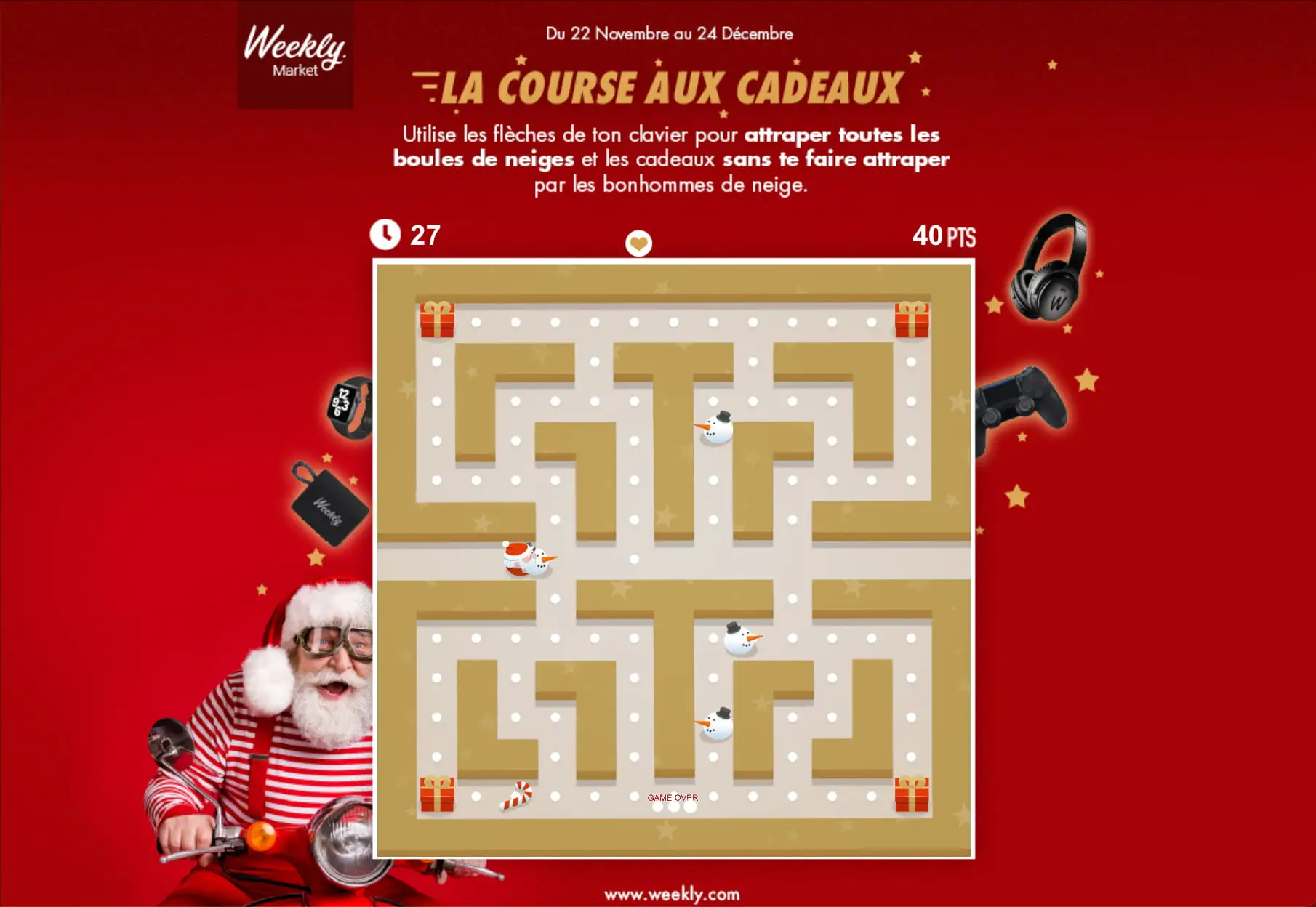
History of gamification
Le concept de gamification s’est développé au cours des années 2010, mais il est plus ancien. Dès la fin du 19e siècle, les détaillants distribuent des timbres pour récompenser leurs clients. 100 ans plus tard, les jeux ont fait leur entrée dans le monde de l’entreprise pour booster la satisfaction et l’engagement.
Mais c’est American Airlines qui nous offre le premier cas d’usage du marketing gamifié en 1981. Son programme de fidélité, AAdvantage proposait des récompenses en fonction de la fréquence d’achat.
Le terme de gamification a été inventé par Nick Peeling en 2002, encourageant les recherches quant à ses effets sur le cerveau humain. En 2005, la première plateforme de gamification moderne est créée. Bunchball permet aux marques d’ajouter une couche d’interactivité à leur site web pour booster l’engagement des visiteurs.
En 2016, l’apport de la gamification en marketing est reconnu par les entreprises et le secteur représente plus de 2,8 milliards de dollars. Cette part de marché augmente et les spécialistes prévoient qu’elle atteindra 27,7 milliards d’ici 2026.
The 3 main benefits of gamification in marketing
En invitant son audience à interagir via un jeu ou une mécanique ludique, l’entreprise peut booster l’impact et les performances de ses campagnes marketing.
Pour mieux comprendre comment la gamification s’est imposée comme un outil marketing, quel que soit le secteur d’activité, voici ses 3 avantages :
1. Increase user engagement
Nous sommes attirés par la perspective d’une récompense, mais aussi celle de nous mesurer à d’autres personnes. En introduisant un élément de compétition, le jeu augmente l’engagement des utilisateurs jusqu’à 48 %. En raison de leur nature interactive, les taux d’engagement des campagnes gamifiées sont plus élevés. Introduire des jeux dans son parcours d’achat en ligne permet d’augmenter le taux de navigation d’environ 30 %.
2. Collecting data
Recruit new leads and obtain relevant information about your audience is crucial for any company. Contact data not only enables the company to reactivate leads via email or SMS. But the data collected via game marketing campaigns is also very useful for segmenting customers, personalizing offers and building buyer loyalty.
But gamification makes it possible to share lead generation or preference gathering forms in a more organic way. The playful element and the possibility of winning a reward/benefit also boosts participation rates and encourages users to answer honestly.
3. Increase your conversion rate and boost sales.
Gamification also offers powerful purchase incentives. The simple act of sharing discount coupons with participants in a marketing naturally encourages them to buy from the brand. The VIP points system is another gamification mechanism that increases repeat purchases by rewarding consumers for their loyalty. As is the post-purchases game (via a QR code received after the order), which encourages customers to buy from the brand.
How to use gamification in your marketing strategy?
Gamification is a marketing tool that can be perfectly integrated into all stages of the customer journey and across all communication and sales channels. Whether at the moment of discovery, to encourage conversion or build loyalty, on social networks, in your online store or in-store… Interactive marketing can be used in many different ways.
- Make yourself known with a competition on social networks.
Many brands have opted for gamification to boost their visibility on social networks. Celio, for example, has partnered with a popular influencer to attract consumer’s attention for Father’s Day.
- Attract visitors to your website with an instant win.
Mechanisms of Instant-win such as the Wheel of Fortune are used to distribute discount vouchers to participants. This type of event, which offers the chance to win prizes instantly, is a great way to drive traffic to your online store and boost sales.
- Increase online purchases with a marketing game.
Brands can also integrate gamified formats, such as a pinata for example, directly on their website or app. This helps to keep visitors engaged for longer, effectively promote certain products or encourage purchase via targeted incentives.
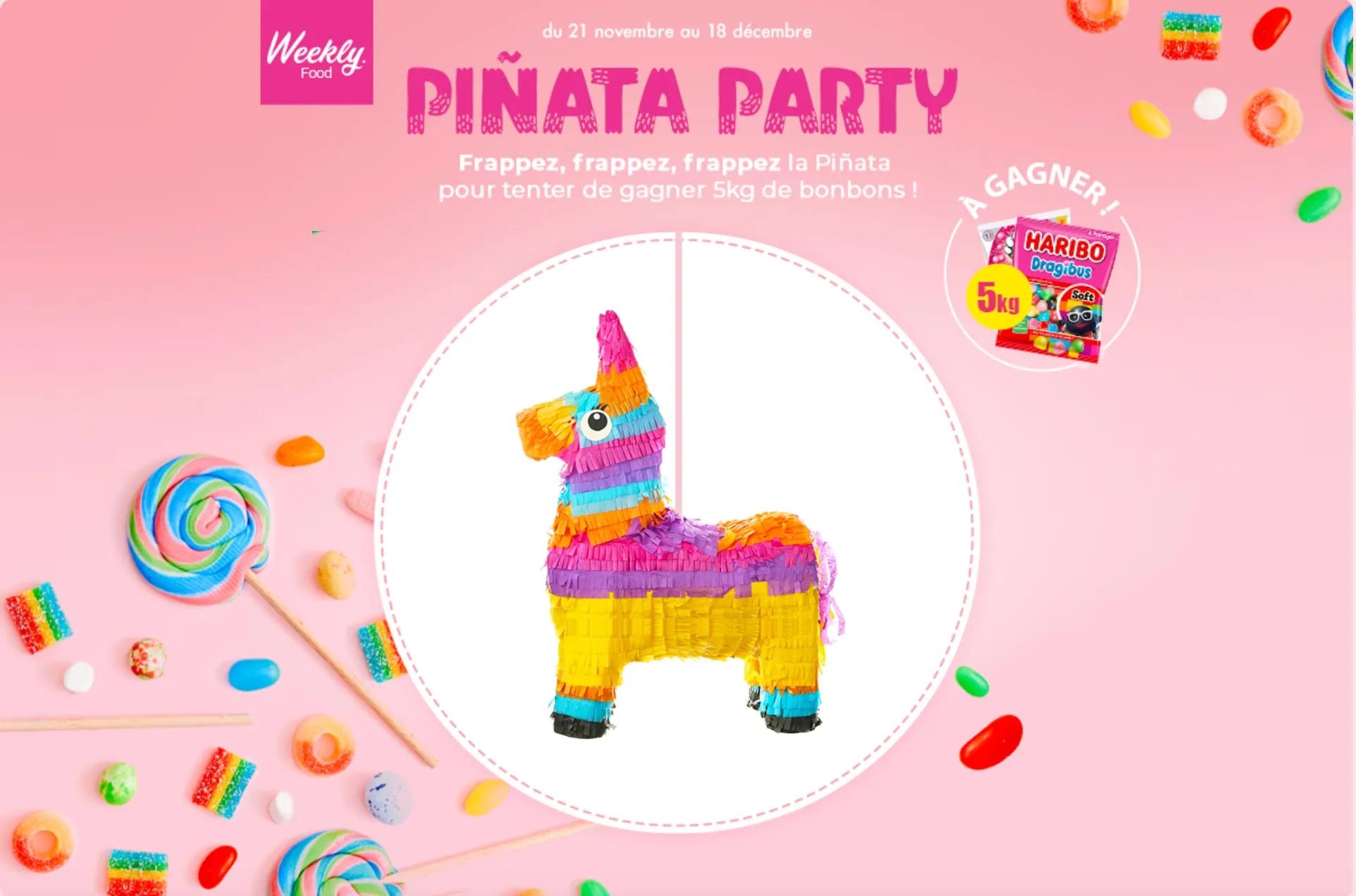
- Know your audience and personalize your offer with an interactive quiz.
Whether in-store or e-commerce, an interactive quiz will enable the brand to better understand its customers’ needs. It can then offer them more relevant products or informative content with greater added value. Interactive quizzes are also widely used to raise awareness of a brand’s offering.
The challenges of gamification
There’s no doubt that gamification marketing can help brands achieve their marketing objectives. However, there are a few points to bear in mind before you start designing an interactive campaign.
First, develop a marketing game requires creativity. Even a simple quiz requires the development of relevant questions that will keep the user’s attention right to the end. Gamified formats also require a certain amount of technical expertise, and may force the company to call on specialized tools.
Conclusion
SaaS solutions such as SaaS gamification platforms enable you to design, personalize, distribute and publicize your gamification marketing campaigns. Adictiz, for example, lets you choose from an exhaustive catalog the mechanics of your choice, according to your objectives. You can then adapt it to your brand universe and easily track the performance of your campaigns. The platform also enables you to activate the data collected directly from the tool, thanks to emailing and segmentation modules.



